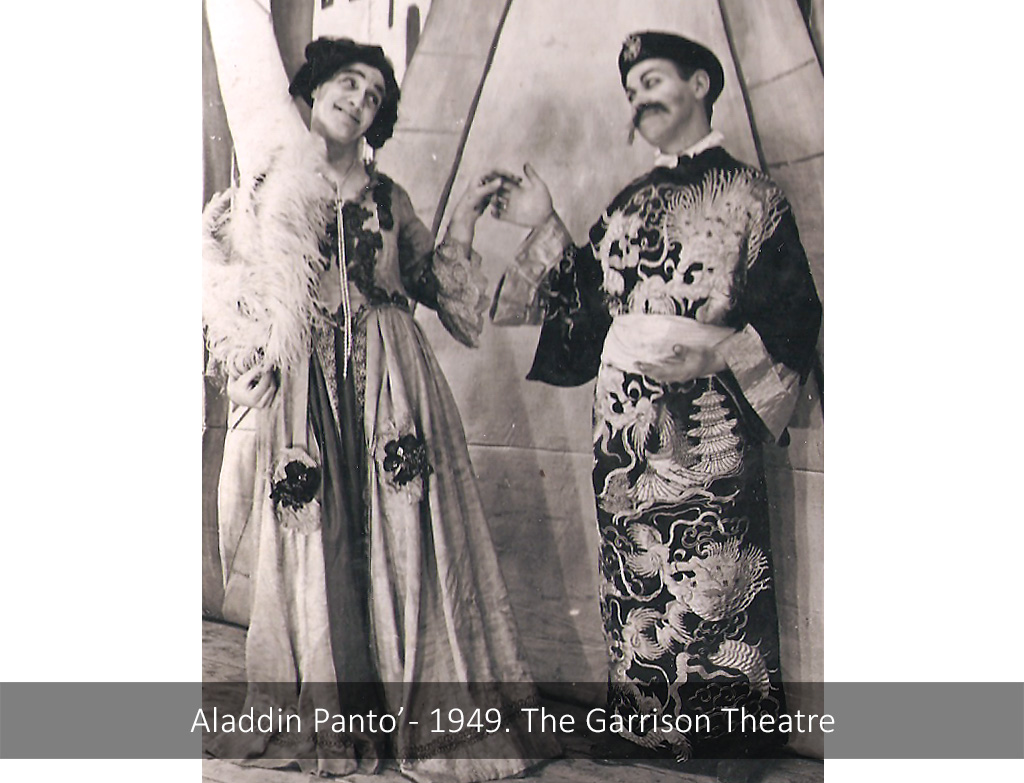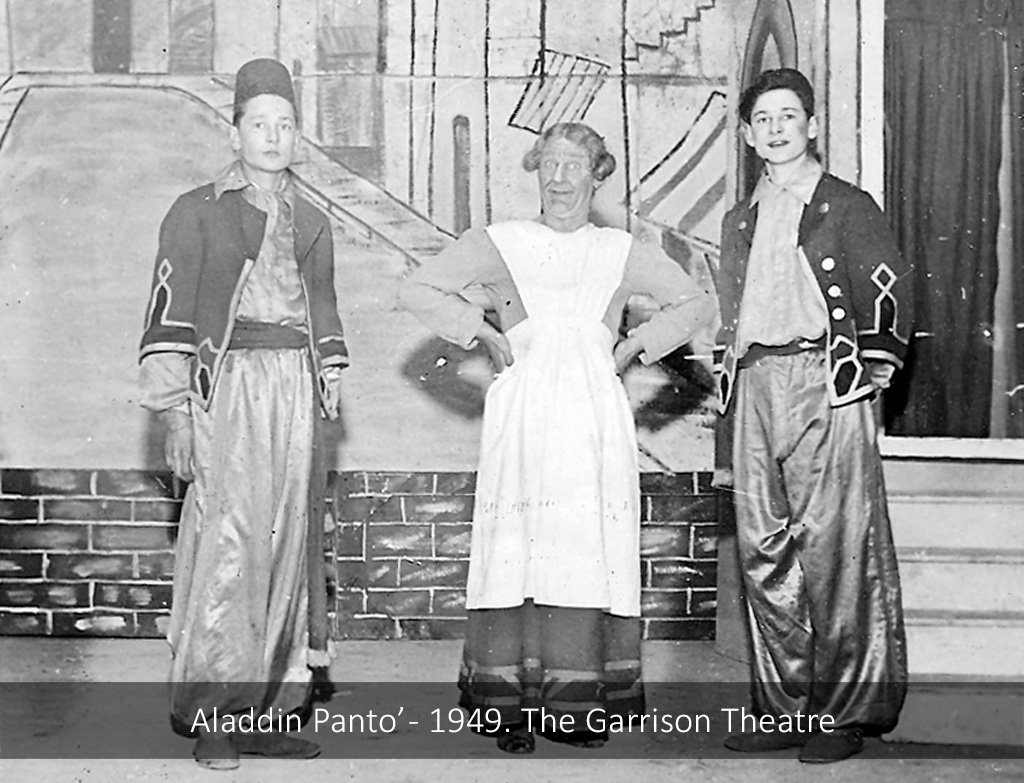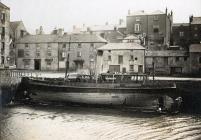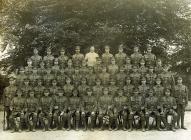Gellir lawrlwytho cynnwys at ddefnydd anfasnachol, megis defnydd personol neu ar gyfer adnoddau addysgol.
Ar gyfer defnydd masnachol cysyllwch yn uniongyrchol gyda deilydd yr hawlfraint os gwelwch yn dda.
Read more about the The Creative Archive Licence.
Disgrifiad
MUSIC AND LAUGHTER IN POST WAR PEMBROKE DOCK In the summer of 1949, Mr Eddie Steadman called a meeting of interested parties and announced plans for a production of Aladdin, which would open just after Christmas and continue into the New Year. No one present at that meeting realised the elaborate scale of Mr Steadman's plans, nor the enormous interest his production would generate. Although the war had been over for four years, conditions in Britain remained austere and thus when Aladdin opened on Boxing Day 1949 in a riot of colour, and projecting a rich mixture of music and laughter, the show's impact was such that it was eventually seen by nearly 5,000 people. CAST There was a phenomenal demand for tickets as word spread that the panto' was a smash hit, and this led to the original week's run being extended to a fortnight, plus additional matinee performances. Mr Steadman had gambled that the public was pining for entertainment of such dimension, and he was right on the ball. The lavish costumes were hired from no less an impressive and expensive source than Fox of London, and receipts were so substantial that all costs were eventually covered. Following auditions, the producer chose an excellent cast and engaged Kay Fowler, an experienced English choreographer who had settled in Pembroke Dock after the war, to train the dancers. He was very fortunate in his choice of Principal Boy, because Pamela Crook of Pembroke, who the previous year had appeared in professional pantomime in Portsmouth, was available. She was blonde and beautiful, had a lovely voice and a real talent for acting. Mr Steadman's other stroke of good luck was that the RAF Garrison Theatre at Pembroke Dock was available. It was by far the best equipped theatre west of Swansea, had leather tip-up seating for 350, a gallery, orchestra pit, huge stage, palatial dressing room accommodation, and a superb lighting system. It was also one of Pembroke Dock's most historic buildings, being the former Dockyard Chapel, erected in 1834 at the western end of the Royal Dockyard. The Air Ministry took over the former dockyard on March 31st, 1930, and once the RAF moved in they set about converting the chapel into a theatre, which was also used as a cinema. SPECIAL Widow Twankey was played by Claud Tozer of Pembroke Dock, a real old trouper who'd had professional stage experience with the Ben Greet Players, and other principal players included Trevor Morgan, Jimmy Cork, Vincent West, Tommy Moran, the Brabon twins and RAF Pembroke Dock personnel. RAF lads also formed the stage crew, under a Warrant Officer Geoffrey Laing. Norman Dodsley, who took the part of the Court Chamberlain, was a senior technician with the RAF at Pembroke Dock - he died under tragic circumstances in the early 1950s. The orchestra included two local musicians, Charlie and Rosa Allen. Llewellyn Thomas, then in charge of the West Wales Guardian's Pembroke Dock Office, wrote about Aladdin: "When local people queue in their hundreds night after night in cold, damp weather, for admission to a pantomime, they must be expecting something special. Aladdin is just that something special, the likes of which has not been seen in Pembrokeshire for very many years, indeed if ever before." The pantomime had a cast of around 60, including a large number of children constantly chaperoned by their parents. Before and after the show there was often bedlam back stage as mums and dads delivered kids and picked them up later. Grateful acknowledgement to Vernon Scott


















Oes gennych chi wybodaeth ychwanegol am yr eitem hon? Gadewch sylwad isod
Sylwadau (0)
Rhaid mewngofnodi i bostio sylw